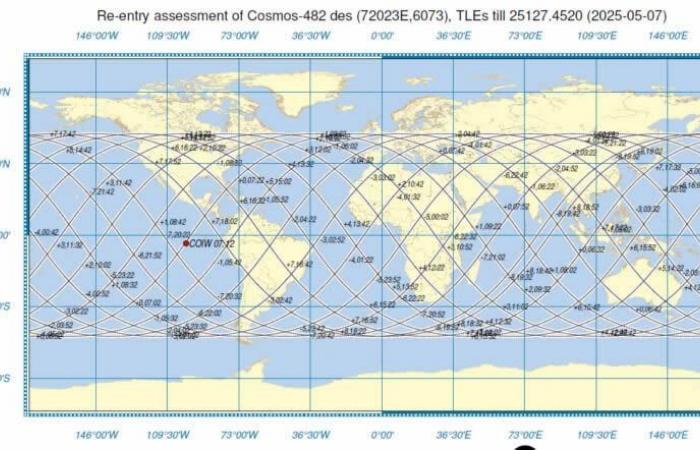
The Cosmos-482 probe, launched 53 years ago for Venus, found himself blocked in terrestrial orbit after a launch failure.
According to updated forecasts from the ESA space debris office, the start of the atmosphere will take place on Saturday at 9:12 a.m., with an uncertainty margin of ± 13.67 hours. This means that the capsule could enter the atmosphere at any time between Friday and Saturday evening.
In a press release, the European Space Agency (ESA) announced that the Soviet Space Capsule Cosmos-482 will carry out An uncontrolled school year in the earth’s atmosphere on Saturday May 10, 2025.
Back to the Cosmos-482 probe
The agency notes that the impact point is located in a large strip of the planet, between 52 degrees in the north and south of the equator, covering a large part of the surface of the earth. As the date of start -up in the atmosphere is approaching, estimates should be adjusted more precisely.
Cosmos-482 is a descending capsule of the Soviet program Venera, designed to land in Venus. However, His launcher has never managed to escape earthly gravity, leaving the probe in orbit around the earth since 1972.

NASA had already warned this week that the orbit of the spaceship was quickly deteriorated And that a return to the atmosphere could occur between May 7 and 13.
The American agency noted that the capsule having been built to withstand the extreme conditions of the Venusian atmosphere, it is not excluded that parts of the spacecraft can survive at the atmospheric back to school and hit the surface of the earth.
ESA explained that at the time estimated at the start of the school year, the capsule will be located at an altitude of about 10 kilometers above an area known as Coiw (Center of the Impact window), Although the exact place where debris could fall is uncertain. Indeed, any variation of the time of return to the atmosphere would also modify the position of the spaceship on its orbital trajectory.
The next ESA updates will reduce the margin of uncertainty, while continuing to follow up on this historic object which, Half a century later, again attracts international attention.

To follow the probe progression, more than 50 years after its launch, you can go to this page.
Article reference:
NASA in Spanish














